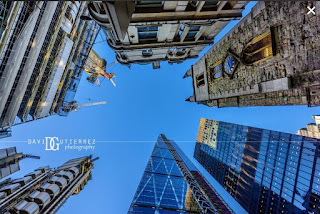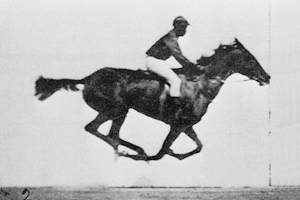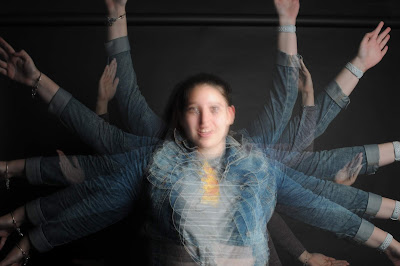He is a London interior and architectural photographer, he specialises in architectural photography. His style is modern, contemporary. He is interested in urban landscapes and how new structures effect the city's development. Starting in 1999 in New York is where with a analogue camera his passion grew and continued to 2002 where he moved back to London, UK. This kick started his career, switching to a digital camera in 2006. This has allowed him to photograph many cities not only London but Tokyo, Hong Kong, Bilbao and Paris.
He has created many different series of images:
- Twilight
- Exposure
- Imitation
- Structure
- Vertical
- Tube
- Greyscale
- Abstract
- Interior
(https://www.davidgutierrez.co.uk/).
(From the series EXPOSURE, 'Tower Bridge, 2012, London, UK' )
(https://www.davidgutierrez.co.uk/london-photographer--architecture--streaming-light.html)
This photo is of Tower Bridge in London at night where all the lights are on. The long exposure has allowed the streams of lights created by car and busses crossing the bridge to help illuminate the photo. They also bring in colour and drama to the photo. The streak's imply movement as that is how they are created, allowing the eye to follow it into the photo. As a result the viewer can easily draw themselves into the photo.
(From the series VERTICAL, ''Work In Progress' London, UK' )
(https://www.davidgutierrez.co.uk/london-photographer--creative-photography--architecture--looking-up.html)
In this photo there is a lot of juxtaposition between the old and the new and the in progress buildings. This shows almost how the city is changing as there are the old builds right next to these new a slick skyscrapers. It gives an out with the old and in with the new feeling to the photo. The angle shows the height and the vertical lines show the grandness of the buildings. As the eyes of the viewer move up the building for some its like you cant even see the top. This can create the feeling of intimidation and fear.
(From the series GREYSCALE, 'London Bridge Station - London, UK' )
(https://www.davidgutierrez.co.uk/london-photographer--black-and-white-photography.html)
This black and white photo the grey tone allows highlighting of the structure of the stairs and escalators. The angle at which it was taken has the whole width of the stairs in view this creates the illusion that the view could step into the photo and actually walk up the stairs. As your eyes move up the photo it becomes more blurred. As a result the thought of mystery arises due to the unknown of what is at the top. The great thing about this is you know that you should end up outside by London Bridge in London due to the name of the photo.
(From the series TWILIGHT, 'Millennium Bridge and St.Paul's Cathedral 2012, London, UK' )
(https://www.davidgutierrez.co.uk/london-photographer--night-urbanscape-photography.html)
In this photo of St.Paul's Cathedral you can tell that it has been taken probably by laying down on the Millennium Bridge due to how low the photo has been taken. The height of the barriers because of the angle have become a frame enclosing the photo. The forces the viewers eyes straight down the centre of the photo, helped by the pattern on the floor as the squares are even in straight lines. The lights in the photo also have the same effect as if your eyes stray from the orange lights you then hit a barrier of blue lights. Everything in this photo is designed and taken to force the eyes of the viewer down the bridge to see the Cathedral which stands at the end highlighted with white light creating the illusion of grandness as its so strong due to the lighting being harsh.
(From the series IMITATION, 'Trafalgar Square, 2011, London, UK' )
(https://www.davidgutierrez.co.uk/london-photographer--architecture--reflections.html)
For the last photo i believe that he has taken this photo after a rainy day as he has used the reflection of the puddles to create a mirrored effect. This photo of Trafalgar Square is different to the ones you normally see. The burst of light highlighting the design and structure of the buildings really brings it forward. Then that being reflected in the stillness of the water on the floor creating this duplicate, resulting in a illusion where you could enter either side of the photo. This illusion is only broken as the tree is distorted and you can't see the water from the fountain in the reflection otherwise i think it would become extremely impossible to tell which way up the photo would have meant to be.
(https://www.davidgutierrez.co.uk/london-photographer--architecture--streaming-light.html)
This photo is of Tower Bridge in London at night where all the lights are on. The long exposure has allowed the streams of lights created by car and busses crossing the bridge to help illuminate the photo. They also bring in colour and drama to the photo. The streak's imply movement as that is how they are created, allowing the eye to follow it into the photo. As a result the viewer can easily draw themselves into the photo.
(From the series VERTICAL, ''Work In Progress' London, UK' )
(https://www.davidgutierrez.co.uk/london-photographer--creative-photography--architecture--looking-up.html)
In this photo there is a lot of juxtaposition between the old and the new and the in progress buildings. This shows almost how the city is changing as there are the old builds right next to these new a slick skyscrapers. It gives an out with the old and in with the new feeling to the photo. The angle shows the height and the vertical lines show the grandness of the buildings. As the eyes of the viewer move up the building for some its like you cant even see the top. This can create the feeling of intimidation and fear.
(From the series GREYSCALE, 'London Bridge Station - London, UK' )
(https://www.davidgutierrez.co.uk/london-photographer--black-and-white-photography.html)
This black and white photo the grey tone allows highlighting of the structure of the stairs and escalators. The angle at which it was taken has the whole width of the stairs in view this creates the illusion that the view could step into the photo and actually walk up the stairs. As your eyes move up the photo it becomes more blurred. As a result the thought of mystery arises due to the unknown of what is at the top. The great thing about this is you know that you should end up outside by London Bridge in London due to the name of the photo.
(From the series TWILIGHT, 'Millennium Bridge and St.Paul's Cathedral 2012, London, UK' )
(https://www.davidgutierrez.co.uk/london-photographer--night-urbanscape-photography.html)
In this photo of St.Paul's Cathedral you can tell that it has been taken probably by laying down on the Millennium Bridge due to how low the photo has been taken. The height of the barriers because of the angle have become a frame enclosing the photo. The forces the viewers eyes straight down the centre of the photo, helped by the pattern on the floor as the squares are even in straight lines. The lights in the photo also have the same effect as if your eyes stray from the orange lights you then hit a barrier of blue lights. Everything in this photo is designed and taken to force the eyes of the viewer down the bridge to see the Cathedral which stands at the end highlighted with white light creating the illusion of grandness as its so strong due to the lighting being harsh.
(From the series IMITATION, 'Trafalgar Square, 2011, London, UK' )
(https://www.davidgutierrez.co.uk/london-photographer--architecture--reflections.html)
For the last photo i believe that he has taken this photo after a rainy day as he has used the reflection of the puddles to create a mirrored effect. This photo of Trafalgar Square is different to the ones you normally see. The burst of light highlighting the design and structure of the buildings really brings it forward. Then that being reflected in the stillness of the water on the floor creating this duplicate, resulting in a illusion where you could enter either side of the photo. This illusion is only broken as the tree is distorted and you can't see the water from the fountain in the reflection otherwise i think it would become extremely impossible to tell which way up the photo would have meant to be.
Summary
David Gutierrez's work is a big inspiration on my work as shown above, where I used the inspiration from multiple series in order to produce my own work. I really like how different his series are and how they show me different ways to take photos. As a result I have been able to take influence from most of his series, allowing me to easily show were his influence has effected my work.
From EXPOSURE, I used the inspiration of using lights from traffic to show the use of movement. I adapted this by not having to much colour so the viewers eyes where not distracted for the parts of the photo I wanted them to be looking at.
The series VERTICAL, I didn't use the same technique of a 360 degree view in editing as I took preference of using the height of the building to create the same effect. I did this by using the same technique of using angles.
Then the GREYSTYLE, from this series the only inspiration was to do a shoot of mine in Black and White instead of colour to see the effects that it had upon my work. I did like the effect however it wouldn't have work within some of my shoots for example where there was little light, night shoots.
References:
David Gutierrez's work is a big inspiration on my work as shown above, where I used the inspiration from multiple series in order to produce my own work. I really like how different his series are and how they show me different ways to take photos. As a result I have been able to take influence from most of his series, allowing me to easily show were his influence has effected my work.
From EXPOSURE, I used the inspiration of using lights from traffic to show the use of movement. I adapted this by not having to much colour so the viewers eyes where not distracted for the parts of the photo I wanted them to be looking at.
The series VERTICAL, I didn't use the same technique of a 360 degree view in editing as I took preference of using the height of the building to create the same effect. I did this by using the same technique of using angles.
Then the GREYSTYLE, from this series the only inspiration was to do a shoot of mine in Black and White instead of colour to see the effects that it had upon my work. I did like the effect however it wouldn't have work within some of my shoots for example where there was little light, night shoots.
Lastly IMITATION, in this shoot he used reflections within puddles to create an interesting photo. I adjusted this idea by making the reflections more chaotic and dramatic, instead of using puddles I used a mirror. The inspiration really came from the idea of reflecting the buildings to distort and create a more interesting photo.
References:
D.Gutierrez,
David Gutierrez Photography, [https://www.davidgutierrez.co.uk/]
D.Gutierrez, Exposure, [https://www.davidgutierrez.co.uk/london-photographer--architecture--streaming-light.html]
D.Gutierrez, Vertical, [https://www.davidgutierrez.co.uk/london-photographer--creative-photography--architecture--looking-up.html]





















































